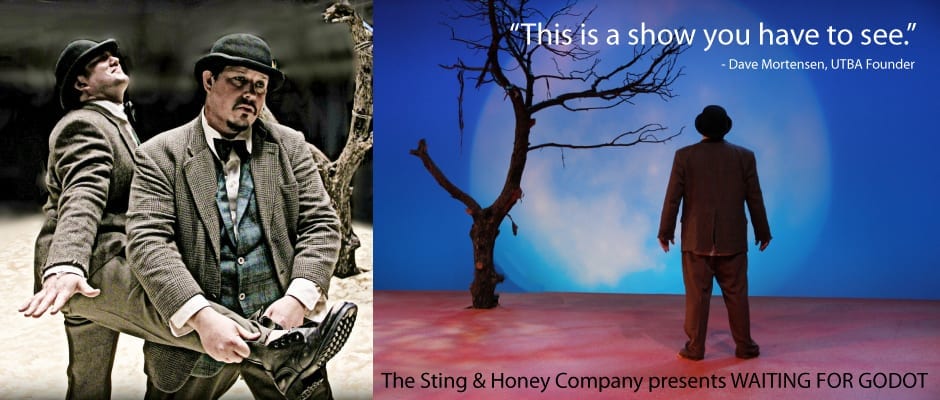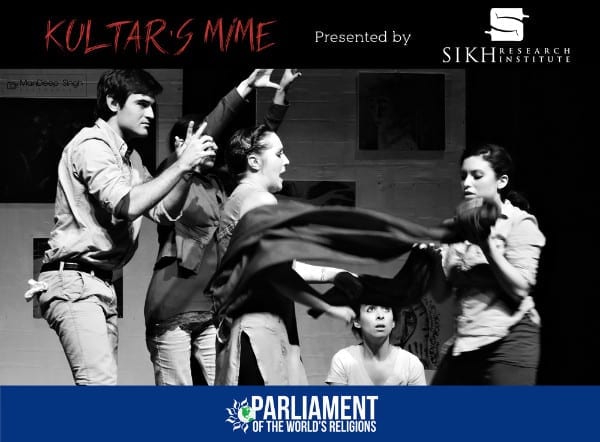CEDAR CITY — It is a season of changes and transitions for the Utah Shakespeare Festival as they move into the new Beverley Taylor Sorenson Center for the Arts. One of the facilities in this new complex is the Eileen and Allan Anes Studio Theatre. With so many changes in the air at the Festival, it is appropriate that the premiere production in this black box theater is Julius Caesar, a play about social change and political upheaval.

Show closes October 22, 2016.
Despite not being the title character, Brutus is the most prominent character in Julius Caesar. The play opens during the celebration of Lupercalia, which coincides with Caesar’s triumphal entry into Rome after a military victory. Cassius fears that Caesar may attempt to seize absolute power for himself and thus destroy the Roman Republic. Therefore, Cassius persuades other senators to assassinate Caesar in order to prevent the formation of a dictatorship, and much of the first third of the play is Brutus’s struggles to decide whether to murder his friend in order to benefit society as a whole. Unfortunately, the civil unrest that Cassius and Brutus attempt to avoid is triggered by the assassination, and the last two acts of the play explore the aftermath of Caesar’s death.
In the smallish black box theatre, director Joseph Hanreddy‘s biggest challenge was to make the cast of 12 convincingly stand in for an entire city. Surprisingly, Hanreddy met this challenge well because he knew that, to sell this illusion, the show had to start off convincing the audience that it took place in a large city. The opening Lupercalia scene was loud, exuberant, and perfectly invoked the crowded urban setting of the play. Hanreddy also was a master at scene transitions, which can slow down a play considerably. In Julius Caesar the changes were all fluid and had a momentum that naturally propelled the play forward to the next scene. One particularly masterful transition was from Brutus’s house to the Roman street, where Ben Abbott not only moved the set pieces, but also transformed himself from a servant to a soothsayer in an unforgettable manner. The result was an uneasy mood that was perfectly appropriate for the impending assassination.

Jeffrey Cummings as Marcus Brutus (squatting) and Paul Michael Sandberg as Julius Caesar (lying down) in the Utah Shakespeare Festival’s 2016 production of Julius Caesar. (Photo by Katrina Christensen. Copyright Utah Shakespeare Festival 2016.)
As Cassius, Rex Young is persuasive, friendly, and patriotic—all traits that the character must have in order for it to be convincing that he could organize a conspiracy to commit murder. What is most remarkable, though, is that Young is so sincere in his performance. As a result, Cassius is not another power hungry senator; rather, he is genuinely concerned for the well being of the Republic. It is this sincerity that brings complexity to Young’s performance because his conspiracy is motivated by a desire to help society. I found that Young made Cassius into one of the most complex antagonists in the Shakespeare canon because the character was not simply a bad person (as is the case for Richard III) or motivated by a lust for power (like Macbeth).
Likewise, Jeffrey Cummings’s performance as Brutus was multidimensional, and the psychological struggle Brutus experiences through the play—as he agrees to join the conspiracy and then must deal with the aftermath of the assassination—is interesting because of the subtlety that Cummings could bring to his acting in such an intimate space. Where Dante saw only unvarnished condemnation for Brutus’s treason, Shakespeare sees a personal struggle and good intentions. Thus, Cummings wisely eschewed a flashy performance, and this made the character feel grounded, especially in his interactions with his wife, Portia (played by Melissa Graves). The husband-wife relationship was authentic in the familiarity the two seemed to display towards one another, and it was easy to believe that they were an established couple with a long history together.

Rosie Ward (left) as Calphurnia, Paul Sandberg as Julius Caesar and Andrew May as Casca in the Utah Shakespeare Festival’s 2016 production of Julius Caesar. (Photo by Katrina Christensen. Copyright Utah Shakespeare Festival 2016.)
The supporting cast included several actors who provided noteworthy performances. In addition to her strong, steely portrayal as Portia, Melissa Graves gave life and depth to the minor character of Popilius Lena, and her reactions in the assassination scene were memorable, without distracting from the main drama of the murder. As the title character, Paul Michael Sandberg had the confident stride of man on the rise, which made Cassius’s comparison of Caesar to “a Colossus” realistic. I also enjoyed Sam Ashdown‘s performance as Mark Antony. Ashdown has ample experience playing a Shakespearean general in wartime, and he turns in his usual high quality of work in Julius Caesar. But I appreciated the private look at Antony when he discusses who to condemn to death (i.e., proscribe), which showed a calculating, careful side to the character.
The biggest drawback to this production, though, was the decision to dress the actors in modern costumes with a touch of Roman influence. For example, senators were dressed in slacks, dress shirts, and ties, with a toga-like cloth draped over one shoulder. Indeed, some characters were dressed by costume designer Rachel Laritz in completely contemporary clothing. This made many scenes, such as when Mark Antony mourns Caesar’s death, look like a rehearsal or a student-produced college production—not an Equity production from a Tony Award winning company. Indeed, the show did not feel completely costumed until the fourth act. This costuming choice was especially unfortunate because the publicity art for Julius Caesar (see above) conveys the impression that the show would be in period dress, and the bait-and-switch is disappointing.

Rex Young as Caius Cassius in the Utah Shakespeare Festival’s 2016 production of Julius Caesar. (Photo by Katrina Christensen. Copyright Utah Shakespeare Festival 2016.)
However, the sound design from Lindsay Jones was an essential ingredient to making the small cast stand in for the entire city of Rome. Jones’s choices were impeccable, whether it was the rollicking drum beats of the Lupercalia celebration or the chaos of wartime.
As a whole, Julius Caesar is an excellent production of an under-appreciated Shakespeare play. A uniformly strong cast and expert direction have made the show a clear hit. Whether an audience member is looking for political intrigue, matchless acting performances, or just wants to check out the new Anes Studio Theatre, it will be hard to be disappointed in Julius Caesar.





